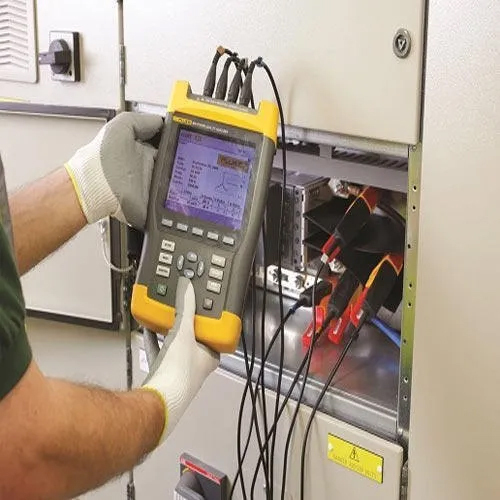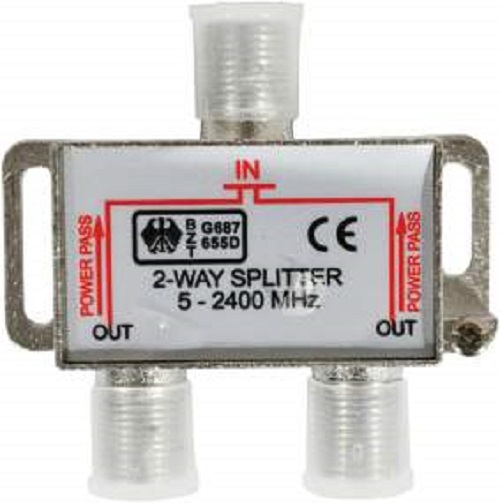Power quality is a crucial factor. It directly affects the effectiveness, dependability, and performance of electrical systems in the dynamic world of energy management. For commercial, industrial, and residential activities, reliable and smooth electric power distribution is essential.
Power Quality Analysis Services have become essential instruments. They are used for thoroughly evaluating the condition of electrical systems, spotting possible problems, and assuring peak performance.
The Essence of Power Quality
In essence, power quality encompasses the consistency and dependability of the electrical supply. It includes aspects including voltage strength, frequency stability, waveform distortion, and interruption-free operation.
Maintaining continuous power quality is crucial for smooth operations. It reduces interruptions for industries and enterprises that rely significantly on electrical infrastructure.
Having Knowledge About Power Quality Analysis
A thorough evaluation of the numerous electrical factors. These collectively characterize the quality of the power provided to a system required for power quality analysis. Power quality analysis services provide insights into the system’s performance by tracking, current waveforms, frequency changes, and other metrics. This reveals departures from the ideal circumstances.
Power Quality Determinants
Power quality can be compromised by several variables that might interfere with uninterrupted power supply. A divergence from the required power quality standards can result from voltage variations. For example, sags (temporary decreases) and swells (temporary increases), harmonics (unwanted frequency components), transients (abrupt voltage spikes), and interruptions.
Power Quality Analysis’s Function
System administrators and engineers use power quality analysis as a compass to understand the condition of their electrical networks. This study assists in locating abnormalities and departures from optimum operating conditions. This is possible by analyzing voltage profiles, current harmonics, and frequency stability, among other factors.
Increasing System Performance
Finding inefficiencies in the electrical system is one of the main advantages of power quality analysis. Organizations may improve energy usage and lower operating expenses by identifying abnormalities and deviations. This supports environmental activities in addition to helping to save costs.
Reducing Equipment Outages
The likelihood of equipment failures can be considerably decreased by proactively recognizing power quality problems. Equipment can experience early wear and tear as a result of harmonic distortion, voltage sags, and transient spikes. Organizations can extend equipment lifespan and reduce unplanned downtime by addressing these problems before they become serious.
Minimizing Interruptions To Business
Predictable operations result from stable power quality. Unexpected shutdowns brought on by power outages or voltage anomalies can impact data centres, disrupt production, and reduce customer confidence. To reduce such business disruptions, it is essential to maintain continuous power quality.
Various Problems With Power Quality
Voltage sags and swells are brief interruptions that can prevent equipment from working properly and result in lost productivity. Non-linear loads produce harmonics, which cause distorted current waveforms that can overheat equipment and reduce system effectiveness.
Transients, also known as voltage spikes, can harm delicate equipment because they result from quick fluctuations in the power supply. Voltage flicker, which is interpreted as varying illumination or equipment behaviour, can affect both operations and comfort.
Voltage Sags and Swells
Temporary changes in voltage levels are referred to as voltage sags and swells, or voltage dips and surges, respectively. Sensitive equipment may be significantly in danger from these changes, which might result in operational interruptions, equipment damage, and losses.
Considering Harmonics
Unwanted frequency components known as harmonics are caused by non-linear loads in the electrical system. These harmonics can cause waveform distortion, equipment overheating, and higher energy losses. To locate harmonic sources and minimize their effects, power quality analysis is crucial.
Transient Management
Transients are sudden and brief voltage increases, sometimes known as voltage spikes or surges. These spikes have the potential to harm delicate electronic gear and interfere with operations. To protect the integrity of the equipment, power quality analysis identifies and assists in managing transients.
Voltage flEnsuring Voltage Flicker Complianceicker can be felt as changes in illumination quality or in how equipment behaves. As excessive flicker can affect the quality of illumination and the functionality of equipment, compliance with flicker regulations is crucial.
The process of analyzing the power quality
A methodical procedure is involved in power quality analysis:
● Data gathering using specialized monitoring equipment
● Detailed examination of the variables affecting voltage, current, and frequency
● Detection of irregularities, deviations, and abnormalities
● Compilation of thorough papers with advice and insights that can be put to use
Instruments Used in Analysis
To reliably record and understand electrical characteristics, power quality analyzers, digital oscilloscopes, and sophisticated monitoring software are employed. These instruments offer comprehensive data on a variety of characteristics, including harmonics, current waveforms, and voltage profiles.
Power Quality Analysis’s Advantages
Power quality analysis has several benefits, including the following:
● Increased operational effectiveness with optimized electricity usage
● Reduced energy expenses as a result of efficient energy use
● Reduced equipment downtime by proactively detecting and resolving problems
● Increased equipment lifespan due to improved use and maintenance
ROI And Cost-Effectiveness
Power quality study expenditures result in substantial long-term savings. A strong return on investment (ROI) is derived from decreased downtime, increased equipment longevity, and improved operational efficiency.
Making Sure of Regulatory Compliance
Standards and laws governing power quality apply to several businesses. By assuring compliance with these standards, firms may avoid fines and maintain dependable operations.
Benefiting Industries from Analysis
Several different sectors are served by power quality analysis services:
● Manufacturing: Preserving efficiency and reducing downtime
● Healthcare: Ensuring uninterrupted operation of vital medical equipment
● Protecting critical IT infrastructure from power abnormalities in data centres
● Continually providing services to renters and residents in commercial buildings
Case Study: Reducing Downtime in Data Centres
In a real-world instance, power quality monitoring was crucial in averting expensive data centre downtime. The study ensured the continued and dependable operation of crucial IT systems. This is possible by anticipating possible problems and taking proactive measures to rectify them.
Collaboration with Professionals
Power quality specialists work directly with companies to do in-depth analysis, evaluate findings, and put remedial measures into place. Through this cooperation, businesses are guaranteed to obtain solutions that are specifically suited to meet their unique operating requirements.
Solutions for Real-Time Monitoring
Real-time power quality monitoring systems have been made available because of technological advancements. These solutions provide immediate insights into power quality, allowing businesses to react quickly to outliers and keep things running smoothly.
Future Directions for the Study of Power Quality
Analysis of power quality will change along with the energy landscape. Predictive maintenance techniques will be made possible by integration with smart grid technology and enhanced data analytics, which will increase the accuracy of analysis.
Conclusion
Power quality analysis services are emerging as a crucial cornerstone for sustaining effective and dependable industrial operations. This is essential in an era of technology reliance and demanding operational requirements. Businesses may save downtime, extend equipment longevity, and comply with industry requirements by recognizing and resolving power quality concerns.
Adopting power quality analysis is more than simply a tactical decision. It’s an investment in operations that run continuously and sustainably in line with today’s requirements for effectiveness, dependability, and sustainability.





